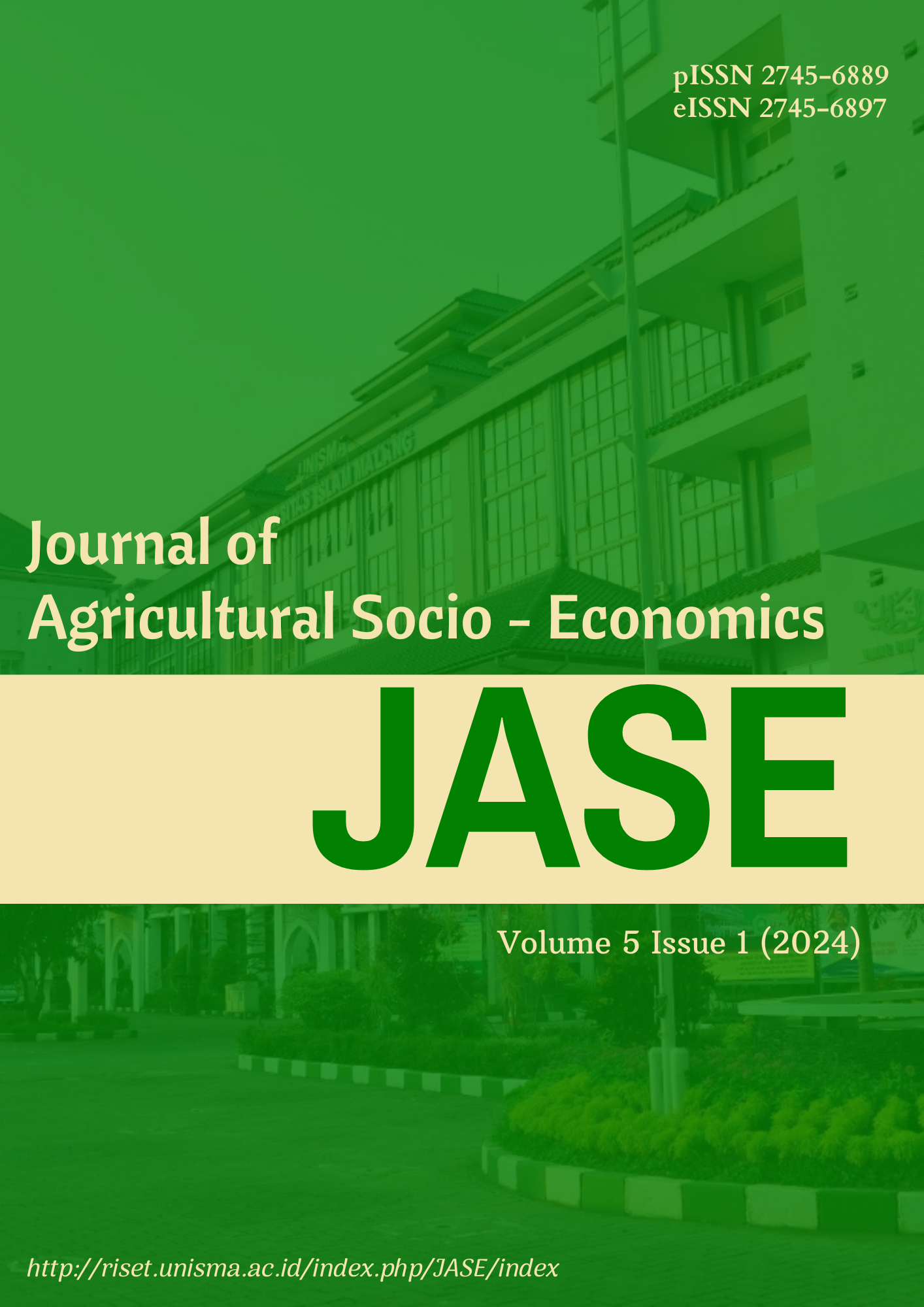CLOVE FARMING DEVELOPMENT STRATEGY AS AN ECOSYSTEM CONSERVATION AND RESTORATION ACTION IN THE BONGOK FOREST
DOI:
https://doi.org/10.33474/jase.v5i1.21369Abstract
The function of protected forests in Indonesia is very important to maintain their sustainability as a life support system and protect the water (hydrological) system of the surrounding area for life. The clove planting program in 2022 in an area in the Bongok forest is an example of conservation with an ecosystem conservation and restoration program. The research aims to analyze the internal and external factors that influence clove farming development strategies as conservation and ecosystem restoration actions, as well as describing alternative clove farming development strategies as ecosystem conservation and restoration actions in the Bongok Forest, Jetak Village, Montong District, Tuban Regency. The research uses survey methods (field observations, interviews and literature studies) with quantitative descriptive methods. The determination of respondents was carried out deliberately as many as 5 people consisting of farmer groups and the head of Jetak Village. The data analysis method uses SWOT analysis and space matrix for sustainability analysis. Alternative clove farming strategies based on SWOT matrix analysis are increasing clove productivity, increasing human resource capabilities in developing technology and information, increasing forest conservation and utilization (SO). Meanwhile, the WO (weaknesses opportunities) strategy is to hold regular outreach from the agricultural department and submit proposals to the agricultural department to meet the capital for clove farming. The ST (strength threats) strategy requires mitigating and adapting to weather changes, increasing agricultural extension programs and adding skilled workers in their fields. The next alternative strategy is WT (weaknesses threats) seeking information to increase knowledge in clove farming, equipping agricultural equipment and infrastructure and applying for a loan from the bank with low interest returns. Based on the results of calculating internal and external factors, the alternative strategy using the space matrix is in the first quadrant position, namely the aggressive quadrant which is limited by the X axis and Y axis, both of which have positive values, namely 0.28; 0.54.
Downloads
Published
How to Cite
Issue
Section
License
Copyright (c) 2024 Agustinus Rangga Bella, Ana Arifatus Sa'diyah, Ninin Khoirunnisa

This work is licensed under a Creative Commons Attribution-ShareAlike 4.0 International License.
JASE: Journal of Agricultural Socio-Economics with a registration number of ISSN xxxx-xxxx (printed) and xxxx-xxxx(online) published by the Department of Agribusiness, Faculty of Agriculture at the University of Islam Malang by applying for copyright and License.
Copyright:
- Copyright in each text is the property of the author.
- The author agrees that JASE has the right to the first license issued with a Creative Commons Attributions-ShareAlike 4.0 International License.
- The author can write the article separately through non-exclusive distribution with other versions related to the article that was first published in the JASE : Journal of Agricultural Socio-Economics.
Licence:
- Attribution: You must give appropriate credit, provide a link to the license, and indicate if changes were made. You may do so in any reasonable manner, but not in any way that suggests the licensor endorses you or your use.
- ShareAlike: If you remix, transform, or build upon the material, you must distribute your contributions under the same license as the original.
- No additional restrictions: You may not apply legal terms or technological measures that legally restrict others from doing anything the license permits.
You are accessible to:
- Share a copy and redistribute this material in any form or format.
- Change and make derivatives of this material for any purpose, including commercial interests.
- The licensor cannot revoke the above conditions as long as the authors comply with the terms of this license.
Â

This work is licensed under a Creative Commons Attribution-ShareAlike 4.0 International License.








_-_Copy.jpg)

